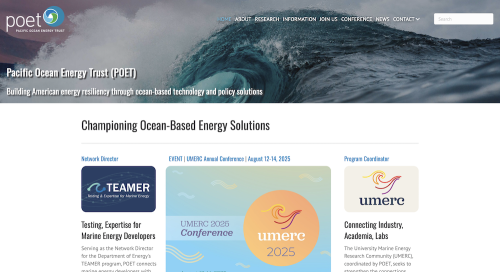What is Holding Back the Grid? Key Takeaways from a Conversation with Rob Gramlich, President of Grid Strategies LLC



Cut through the green tape
We don't push agendas. At Net Zero Compare, we cut through the hype and fear to deliver the straightforward facts you need for making informed decisions on green products and services. Whether motivated by compliance, customer demands, or a real passion for the environment, you’re welcome here. We provide reliable information—why you seek it is not our concern.
As more companies work toward decarbonization and compliance targets, one issue keeps coming up: the electricity grid. Whether a company is a developer, investor, or energy buyer, transmission infrastructure is often a limiting factor, and understanding how it is evolving can help organizations stay ahead.
To explore this topic further, we spoke with Rob Gramlich, President of Grid Strategies LLC, a Washington D.C.-based consultancy focused on U.S. transmission and electricity markets. The conversation offered valuable insights into the current challenges in grid expansion, how businesses can prepare for the coming changes, and what role transmission policy plays in a cleaner energy future.
Watch the full conversation with Rob Gramlich on grid policy, infrastructure, and business strategy in the video below:
What Grid Strategies Does
Grid Strategies LLC was established eight years ago and has grown into a respected voice in the energy policy space. The firm works across federal and state levels, advising clients on electricity markets, transmission infrastructure, and regulatory frameworks. Their clients range from renewable energy developers and large investors to utilities and public institutions.
“Our view is that transmission is the most important part of achieving clean energy goals,” Gramlich said. “We work on the policies, planning, and market rules needed to make that happen.”
The consultancy combines regulatory expertise with a practical understanding of how infrastructure decisions impact real-world outcomes. Their work supports not only decarbonization goals but also system reliability and affordability — all critical elements in today's energy transition.
The Three Main Barriers: Planning, Permitting, and Paying
According to Gramlich, three interconnected issues continue to slow down grid modernization: planning, permitting, and paying.
Planning refers to how transmission needs are identified and addressed over the long term. Many grid operators and utilities still lack integrated, forward-looking planning frameworks that take into account future electricity demand, renewable energy integration, and cross-regional coordination. FERC Order 1920, issued last year, aims to improve this, but implementation across regions is still ongoing.
Permitting involves the multi-layered approval processes required to build new infrastructure. A single project may need sign-off from federal agencies like the Department of Energy or the Bureau of Land Management, state utility commissions, and even county-level authorities. These processes are often slow and unpredictable, creating major bottlenecks in delivery timelines.
Paying touches on the complex issue of cost allocation. When infrastructure serves multiple regions or states, it can be difficult to determine who pays what portion of the cost. Without clear frameworks from regulators such as FERC, projects risk getting stalled in funding disputes. “If a transmission line benefits several areas, it is not always clear who should pay how much,” Gramlich explained. “That is where regulators need to step in and ensure fairness.”
Uncertainty in Federal Policy
While there has been progress in grid policy under the current administration, including support for new planning mandates and funding programs, the policy environment remains uncertain. Implementation depends not only on legislation but also on whether key federal agencies are adequately staffed and resourced.
FERC Order 1920, intended to improve regional planning standards, is an important step. However, its rollout varies by region, and the lack of consistency adds another layer of complexity. Meanwhile, other legislative proposals — such as those aimed at streamlining permitting or improving cost-sharing — have not yet made it through Congress.
“It is a dynamic situation,” Gramlich noted. “We are tracking a lot of moving parts across federal and state levels, and outcomes are not guaranteed.”
Why Transmission Matters for Decarbonization
For companies that are setting sustainability targets or reporting under ESG frameworks, transmission infrastructure plays a crucial — but often overlooked — role. Accessing clean energy resources is not just about building new generation capacity. It is also about being able to deliver that energy where it is needed.
“If your company wants to buy more clean energy, the grid needs to be able to deliver it. Stronger transmission systems make that possible,” Gramlich said.
Currently, most carbon accounting systems do not directly account for transmission access, but there is growing interest in how businesses could play a more proactive role — for example, by subscribing to transmission capacity or advocating for grid policy improvements in their regions.
Working with Different Types of Clients
Although many of Grid Strategies’ clients are large institutions and developers, the firm also works with smaller entities, states, and consumer advocacy groups. Increasingly, even companies that are not directly involved in the energy sector are seeking advice on transmission-related issues, particularly as energy costs, reliability, and ESG compliance become business-critical concerns.
“The electric system is complex. We help people understand how it works and where they fit in,” Gramlich said.
The team’s flexible approach allows them to provide tailored support — from answering targeted questions to offering more comprehensive strategic advice.
What to Watch: Costs, Supply Chains, and Tax Credits
Gramlich noted that electricity costs are expected to rise in the coming years. Several factors are contributing to this trend, including strong demand growth, aging infrastructure in need of replacement, and supply chain constraints for critical equipment such as transformers, conductors, and switchgear.
On top of that, trade tariffs on materials like aluminum and steel continue to affect pricing across the sector. And there are additional concerns: proposed budget changes could lead to reductions or elimination of federal tax credits for clean energy projects. If that happens, renewable energy procurement could become significantly more expensive, particularly for businesses looking to secure long-term clean power contracts.
“These are dynamics that businesses should watch closely. They can directly impact energy pricing and planning decisions,” he said.
Grid-Enhancing Technologies: A Practical Step Forward
As a complement to building new lines, Grid-Enhancing Technologies (GETs) offer a faster and more cost-effective way to improve transmission capacity. These tools help utilities get more out of existing infrastructure.
One example is dynamic line rating, which adjusts how much power a line can carry based on real-time conditions like wind speed and temperature. If a line is being cooled by wind, it can carry more power safely — but only if operators have the technology and data to recognize that capacity.
“There is a lot of usable capacity on the grid that is simply not being utilized,” Gramlich explained. “Technologies like dynamic line rating can change that.”
Adoption is growing, but slowly. Utilities often lack direct financial incentives to deploy these technologies, and technical evaluations are still case-specific. Grid Strategies has been active in raising awareness about these solutions and pushing for regulatory frameworks that encourage broader use.
Policy and Market Changes Businesses Should Track
In addition to federal developments, businesses should also monitor activity at the state level — particularly through Integrated Resource Plans (IRPs). These utility-submitted plans outline how energy demand will be met in the coming years and influence which infrastructure investments move forward.
“These IRPs are where a lot of the real decisions get made,” Gramlich said. “They are submitted across the country, and they shape the mix of generation and transmission that will be developed.”
Keeping an eye on IRP cycles, and engaging where relevant, can help businesses anticipate changes in energy availability and cost.
How to Engage with Grid Strategies
Companies interested in advisory services or policy guidance can contact the team through www.gridstrategiesllc.com or reach out to Rob Gramlich directly on LinkedIn. The firm works on a case-by-case basis and offers flexible arrangements based on the client’s needs and budget.
“We are a small team with a broad range of expertise. Some clients just need a few questions answered, while others prefer ongoing support,” Gramlich said.
Their advisory work spans both strategic consulting and technical analysis, making their services useful to both experienced energy market participants and new entrants navigating policy for the first time.
A Global Outlook
While Grid Strategies is primarily focused on the United States, the firm has worked with clients in Canada, South America, and Europe, and is in discussions with partners in Asia. In many cases, international clients turn to the firm for fresh insights or specialized support on projects that mirror challenges seen in the U.S. market.
“Many of the underlying issues are similar — economics, technology, regulation. We are happy to share what we have learned, and we often learn just as much in return,” Gramlich said.
Final Thoughts
As Gramlich emphasized, the grid landscape is changing fast — and staying informed is crucial. From policy shifts to infrastructure bottlenecks, transmission remains a foundational issue that affects not only the energy sector but any business with sustainability goals or exposure to electricity costs.
“Things change fast. What I said today might be outdated next week. We publish regular updates to help our clients stay current.”
At Net Zero Compare, we will continue tracking these changes and providing practical information to help businesses make informed decisions in a complex and fast-moving energy landscape.

Mentioned in this article...
Organizations
More related content

Ohmie Go and the Rise of E-Mobility as a Building Standard

Turning Waste into Fuel: How Hydrogen Refinery is Reshaping Sustain...

Interview with Jing Tian, Chief Growth and Revenue Officer at Tigo ...
